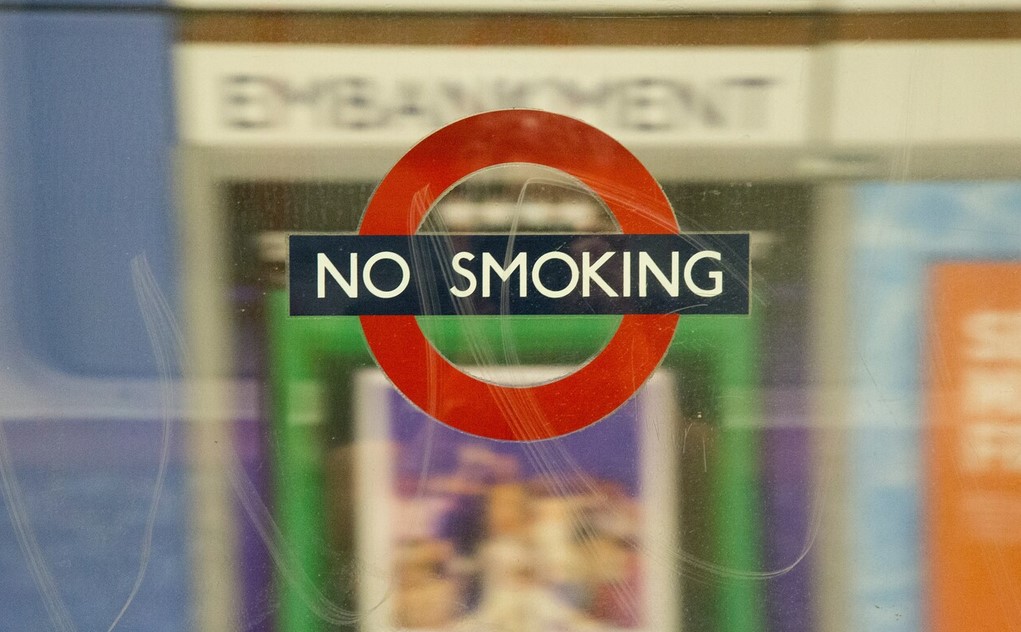Key takeaways
- Nicotine replacement supports smoking cessation with patch.
- Quit smoking aided by effective nicotine patches.
- Nicotine patches ease withdrawal symptoms for quitters.
- Do nicotine patches really help smokers quit?
- Nicotine patches gradually wean off smoking addiction.
If you’ve attempted to quit cold-turkey, you’ll be familiar with the uncomfortable symptoms associated with nicotine withdrawal. These withdrawal symptoms can be intense enough to cause a relapse.
Nicotine Replacement Therapies — particularly the nicotine patch or a combination of the patch and another therapy — have been proven to increase the odds of continued abstinence from smoking by making the road to quitting more tolerable.
So, do nicotine patches work? Yes they do, and below, we explain why.
What Is Nicotine Replacement Therapy?
Nicotine Replacement Therapies (NRTs) are products that release nicotine into the body, without releasing the other toxic, harmful chemicals in tobacco.
Chat to an Aussie GP today
Friendly phone consultations
TGA-authorised Aussie doctors
Nicotine vaping scripts available
They are used as a smoking cessation tool.
They are designed to wean you off smoking gradually by reducing the intensity of nicotine withdrawal symptoms, which in turn promotes sustained abstience from smoking.
NRTs come in various forms, such as gum, lozenges, sublingual tablets, oral inhalers, nasal sprays, and of course, the nicotine patch.
There’s no need to wait to start using an NRT — you can safely begin your NRT treatment as soon as you’ve stubbed out your last cigarette.
What is a Nicotine Patch?
The nicotine patch, also known as the transdermal patch, is a type of NRT that is used to help you stop smoking.
Quitting cold-turkey can be incredibly difficult due to the intense symptoms that come with nicotine withdrawal. While these symptoms are not harmful, they can be extremely unpleasant.
Nicotine withdrawal symptoms are often strongest in the first three days after quitting, and decrease in intensity over a period of about four weeks.
The nicotine patch reduces these symptoms by delivering small doses of nicotine to the bloodstream through the skin.
Nicotine patches are designed to keep the nicotine levels in your blood at a comfortable level, but it can take hours for the nicotine to be absorbed and reach these levels.
This is why nicotine patches are often combined with faster-acting NRTs such as gum, nasal spray, and lozenges, which can be used sparingly when you’re experiencing particularly intense waves of withdrawal.
How Do Nicotine Patches Work?
Nicotine patches work by releasing nicotine into the bloodstream via the skin, where the patch is placed.
The patch is applied to the skin much like a bandaid.
To apply your patch, remove the patch from the foil package, peel of the protective strip, and apply the patch to the skin immediately.
Press it into the skin for about 20 seconds to ensure that it sticks properly.
Once the patch is applied, you can shower, bathe, and swim with it on. Be sure to wash your hands with soap and water afterwards to avoid any irritation.
Nicotine Patch Dosage
There are different dosage options for nicotine patches. The dose you take will depend on your cigarette dependence.
Your beginning patch dose should be similar to the daily nicotine intake you were receiving from tobacco.
After four to six weeks, you will decrease your dose. At eight to ten weeks, you will decrease your dose again. This will help your body adjust to functioning without nicotine.
The aim is to give up the patches completely by the 12 week mark.
While the patches are considered safe for use during this period, they should not be continually used past 12 weeks without approval from a medical professional.
Nicotine patches come in a 24-hour and 16-hour patch, and both versions have three strength options: 7mg, 14mg, and 21mg.
If you are a heavy smoker (you smoke a pack a day or more), you will likely be advised to use the heaviest strength option. Light smokers (you smoke fewer than 10 cigarettes per day) would use the lighter strength option.
The 16-hour patches are removed before bed and the 24-hour patches are removed and replaced first thing in the morning
Do Nicotine Patches Work?
Yes, nicotine patches have been proven to be effective in helping people abstain from smoking.
While tobacco contains over 7,000 chemicals, nicotine is the chemical in tobacco that makes it addictive. Nicotine causes the brain to release dopamine, which is a feel-good hormone that gives you a ‘rush’.
When you give up smoking, your brain continues to crave that rush, so your body begins to produce uncomfortable withdrawal symptoms — such as cravings, muscle pain, restlessness, stress, coughing, head-cold symptoms, and digestive issues — to push you to reach for another cigarette.
Nicotine patches slowly wean you off nicotine. This allows your body to slowly adjust to functioning without nicotine, reducing the intensity of withdrawal symptoms so that they are more manageable than if you had quit cold turkey.
All forms of NRT can increase chances of quitting by 50 to 60%, though the patch has been shown to be particularly effective.
A 2016 study looked at the effectiveness of three different smoking cessation treatments: nicotine patches, the prescription drug varenicline, and a combined patch and lozenge treatment.
At the six-month mark, 23% of people using the patch had quit, while 24% using varenicline and 27% using the combined treatment had quit.
Interestingly, one-year after quitting, 21% of people using the patch were still abstaining from smoking, compared to 19% on varenicline and 20% using a combine approach.
It has been proven that combining the transdermal patch with another form of NRT can increase the quit rate by 5%. This combined treatment plan is generally considered the best-practice approach for smoking cessation, and presents no additional safety risks.
Drawbacks of Nicotine Patches
While nicotine patches can help to reduce withdrawal symptoms, it’s important to note that they don’t address the psychological elements of addiction.This is why it’s essential to seek help from a mental health professional, or regularly discuss how you’re going with your medical practitioner. This is particularly important if you’re struggling with an underlying anxiety or depressive disorder and have been using cigarettes to cope.
Nicotine patches can also cause some unpleasant side effects, including:
- Skin irritation
- Dizziness
- An increased heart rate (this is a sign that your patch dosage is too high)
- Headaches
- Nausea
- Muscle stiffness
- Insomnia
The 24-hour patch can cause sleep disturbances, such as vivid dreams. If this is a problem for you, you can take off your patch before bed and put on a new one first thing in the morning.
If any of these symptoms are occuring for you, be sure to mention them to your GP. They will be able to assess whether your dose is too high or too low, or suggest alternate therapies that you may tolerate better.
Best Place to Put a Nicotine Patch
The best spot for your nicotine patch is on a clean, dry, hairless area of the skin that is unlikely to perspire excessively.
Most people find that the patch works best when placed on an area of the upper body, such as the arm, chest, back, or shoulder.
It’s best to use a different area of the skin each day to prevent irritation from occuring. Avoid putting your patch on oily, scarred, irritated, or damaged skin, as this can stop the patch from sticking properly.
To remove the patch, peel it off carefully and fold it in half so that both of the sticky sides touch, then put it in the bin.
My Nicotine Patch Won’t Stay On — Now What?
If your patch falls off, try applying a new one on a different hairless, clean, dry, non-irritated area of the skin.
Check if the soap you use contains lanolin or moisturisers. These ingredients can interfere with the patch’s adhesiveness, so try using a different soap while using the patch treatment.
Avoid applying any moisturisers, lotions, sunscreens, or skin oils onto the skin before applying the patch. It can be helpful to cleanse the skin with rubbing alcohol, too.
If your patch still doesn’t stick, try putting medical adhesive tape over the patch once it’s applied. Be sure to replace your patch every 16 or 24 hours as instructed on the packet.
Still not sticking? Chat to your doctor about trialling a different brand or product.
Can You Smoke While On Nicotine Patches?
No, you cannot smoke with a nicotine patch on.
Not only can this increase your tolerance and worsen nicotine addiction, but it also puts you at risk of nicotine overdose.
When your body receives too much nicotine, your heart rhythm may be affected and this can be fatal.
Signs of nicotine overdose include:
- Nausea
- Vomiting
- Dizziness
- Diarrhea
- Tremors
- Cold sweats
- Heart palpitations
If you are experiencing any of the above symptoms and are smoking, using a form of NRT, or have smoked while using a form of NRT, call 000.
A Final Word
Nicotine patches have been proven to be effective as a smoking cessation tool.
They are especially effective when combined with another form of NRT, such as nicotine lozenges, gum, or inhalers.
While the road to quitting can be very challenging, you don’t have to do it alone. As well as building up a network of trusted friends and family to support you during this time, it’s important to seek assistance from a medical practitioner.
They will be able to monitor your progress, advise you on NRT dosage adjustments, and suggest additional strategies that may help you along the way.





